What is the strangest museum you have visited? Mine has to be the Matchstick Museum in the small city of Jönköping in central Sweden. A museum dedicated to the history of matchsticks. It won’t surprise you to learn it is billed as ‘the only matchstick museum in the world’. Have you heard of any others?
So why does such a unique museum exist in the lakeside city in Smaland? The matchstick industry was huge in Jönköping. Back in 1848 two brothers Johan and Carl Lundström set up the factory and went on to spearhead the safety match, putting Jönköping on the global map. You see, prior to the safety match, matchsticks could be lit against walls and other rough surfaces causing all kinds of hazards and fires.
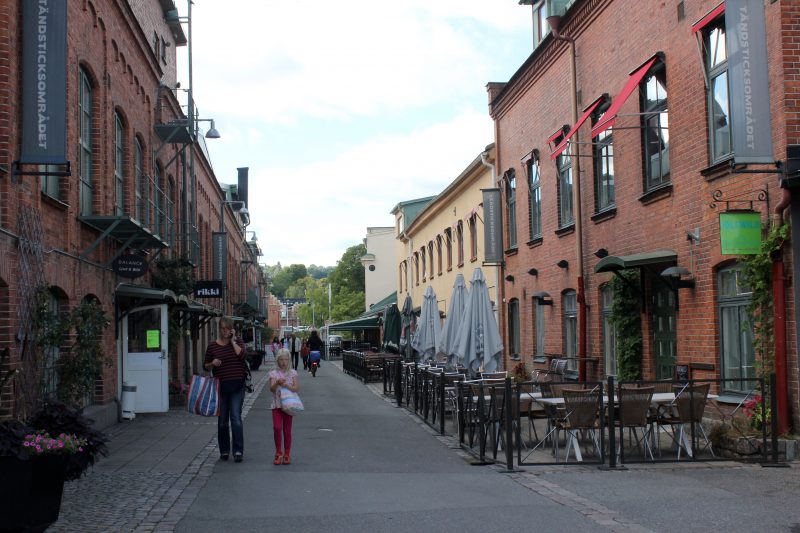
This and more we learnt at the small museum, located on the site of the first match factory in the city’s old town, the Tändsticksområdet area. Some of the other factory buildings have now been turned into shops and cafes. With little else to see in Jönköping, we took a look inside.
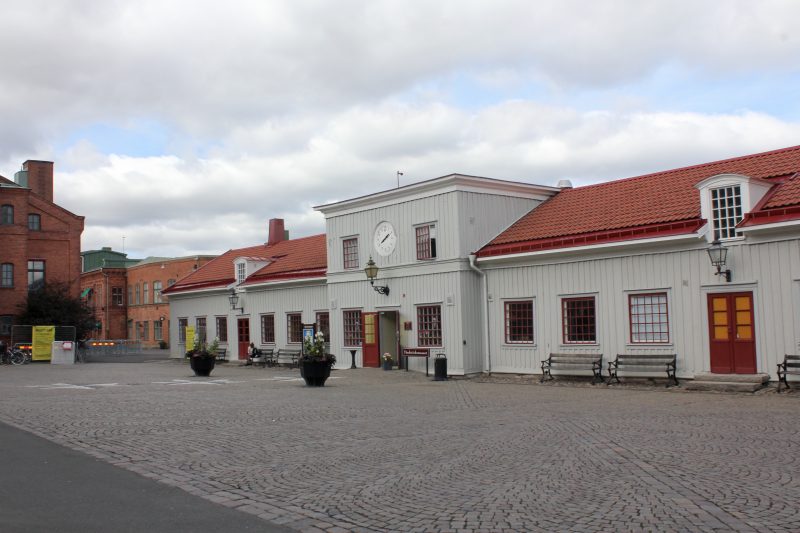
A thin man approaching middle age manned the desk and seemed a little surprised to see us but gladly took 100 SEK (£9) as payment for my husband and I (our daughters went free). He then pondered where we should start.
“I think perhaps you should see the film,” he said, adding, “we have it in English”.
I got the feeling the Matchstick Museum didn’t get many visitors. Indeed, we were the only ones there on a Wednesday afternoon in late August.
I thought my four-year-old daughter would be bored by the 12-minute film but it captivated her. Her overriding memory was of the children whose “teeth fell out and then they died”. The 19th century was big on child labour and the white phosphorus used in the production process caused awful problems, disfigurement and death. I hadn’t realised it would be so graphic but history can be ugly. I explained to her that back then many children her age would have had to go to work rather than school. She seemed a little surprised and a bit sad for the children.
Machines eventually saw families move out of the factories but many continued the work in their houses making match boxes.
The advent of the safety match meant conditions did improve and dangerous white phosphorus was no longer used. In 1853 the factory started producing safety matches instead. It was invented by the chemist Gustav Erik Pasch and improved by Johan Lundström who made it possible to make commercially.
Aspen was now the wood of choice, a bigger match head was installed and a match could only be lit on a strip (made from harmless, red amorphous phosphorous) on the packet, just like it is done today.
After the film we wandered around, checking out some of the machines and other matchstick-related artefacts. Mrs T enjoyed seeing how they worked to create the matchsticks.
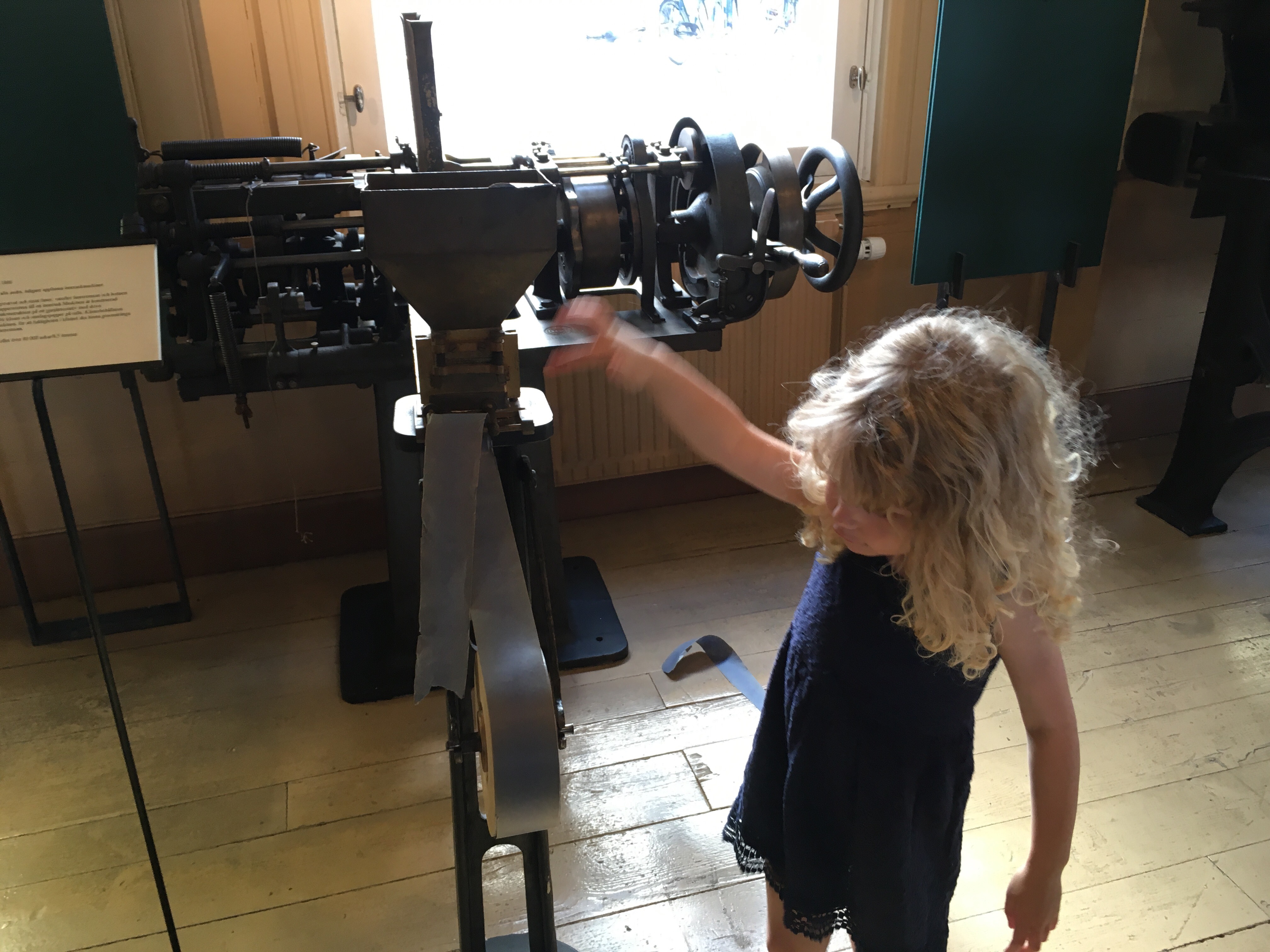
We then got to work making our own matchstick boxes with the material provided and some instructions.
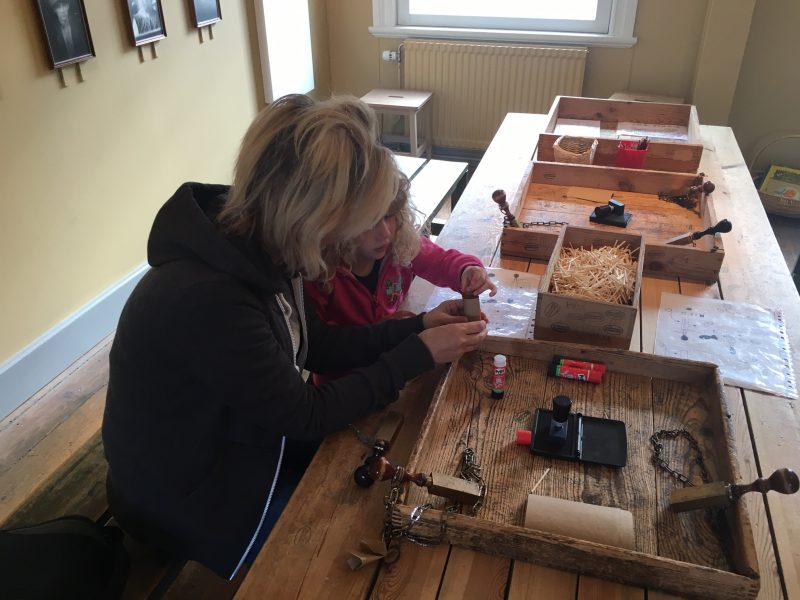 Upstairs there were some bizarre and rather scary sculptures on display clearly inspired by the museum and its child labour.
Upstairs there were some bizarre and rather scary sculptures on display clearly inspired by the museum and its child labour.
There were also examples of some early match boxes.
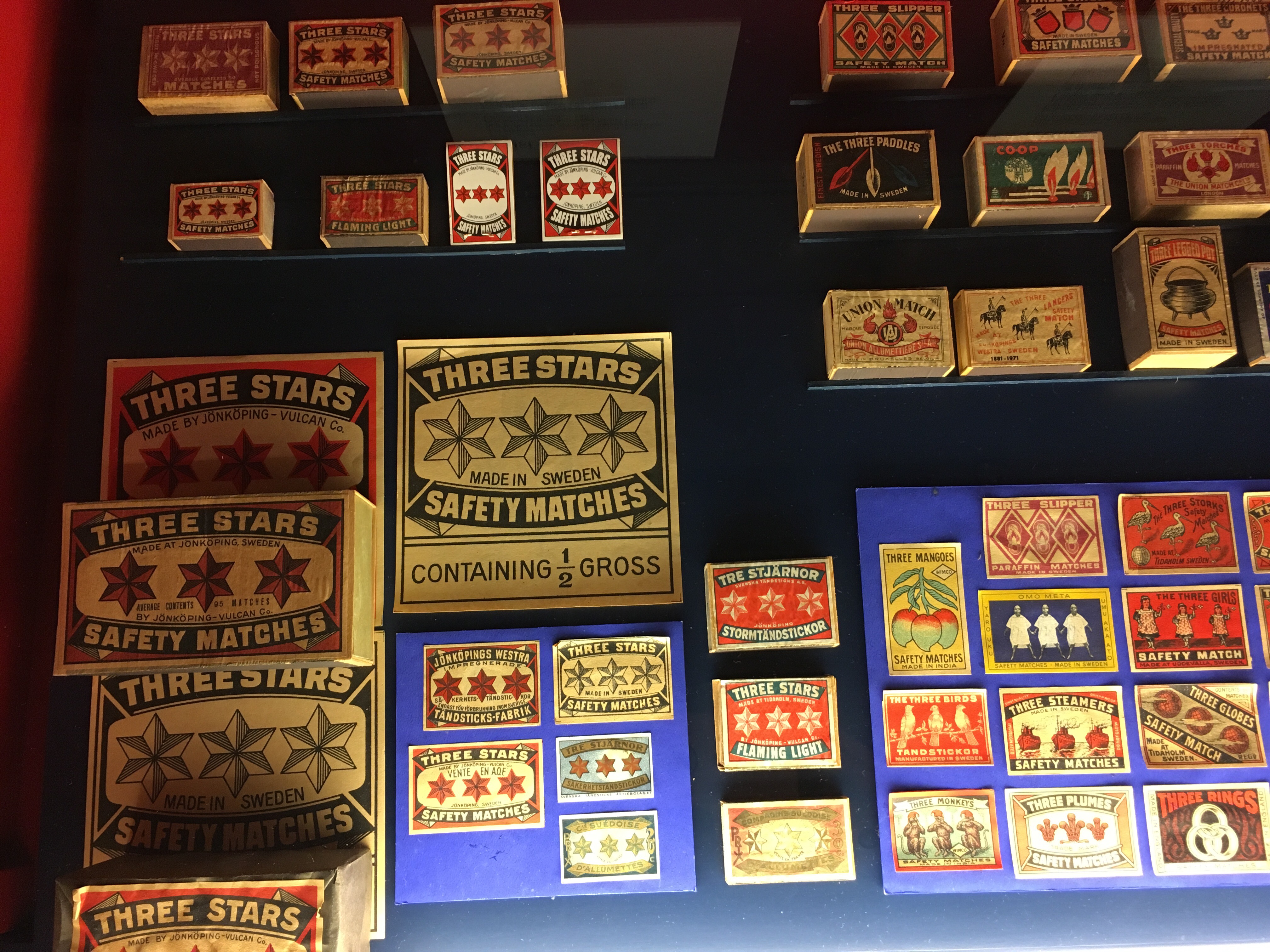
But what fascinated Mrs T most was the lithographic press. It was used to print the artwork for the matchstick boxes using the process of lithography which uses stone, oil and water.
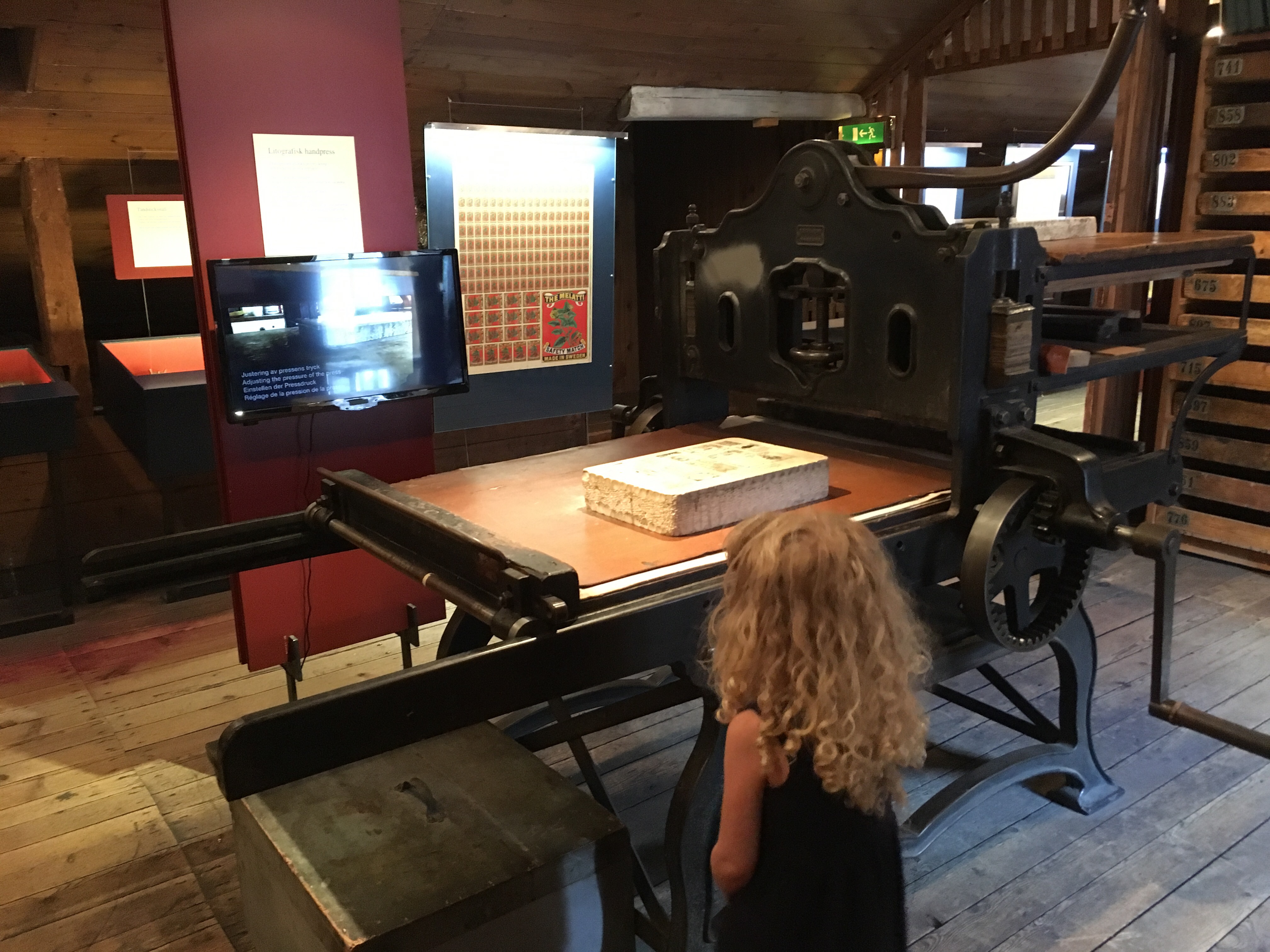
There was a video explaining the process which we watched – twice. It was an education for me too, taking me back to my school art classes. If you’re intrigued we have since watched a YouTube video when reflecting on the trip.
We left the small, slightly random museum having stepped back in time and become more knowledgable about an industry I had no clue about previously. It gave us some context to the small city of Jönköping, its once thriving matchstick industry and the invention of the safety match we all know and use today.
As we wandered outside, we came across the railway station. The railways would have transported the matchsticks for distribution throughout the world. Since the decline of the matchstick industry in the 1970s, Jönköping is now home to many companies’ central warehouses such a IKEA and Electrolux.
Situated next to Sweden’s second largest lake, Jönköping is also a rather picturesque spot.
In case you were wondering, the factory was eventually taken over by the Swedish entrepreneur Ivar Krueger. He bought up all the other Swedish match factories to create one company, STAB (Svenska Tändsticksaktiebolaget) in 1917. The Jönköping factory closed in 1970.
Need to know
Jönköping is around 1 hour 30 drive from Gothenburg. Our visit was part of our summer road trip through Sweden from Oslo to Stockholm. We stayed at the excellent Vox hotel. The matchstick museum costs SEK 50 (£4.50) for adults March-September. Admission is free November to October for everyone. Under 19s are free all year around. Visit the website here.
Pin For Later

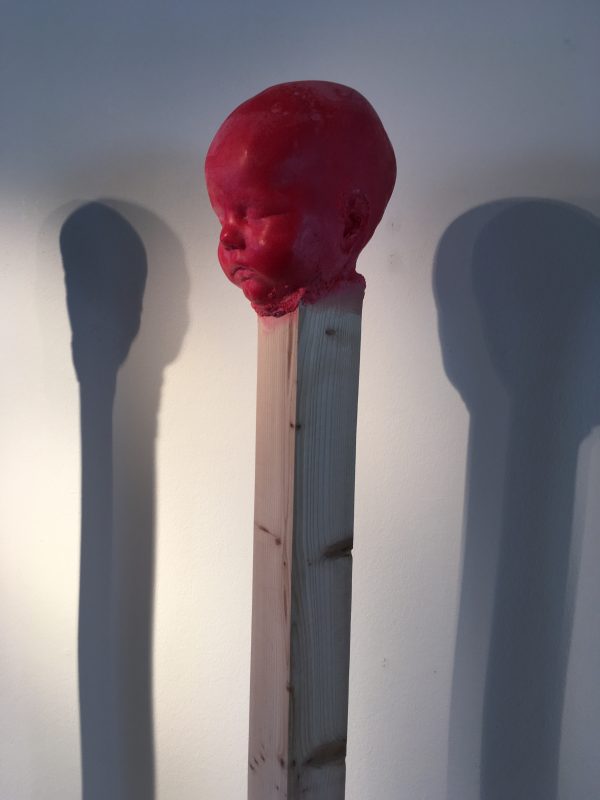
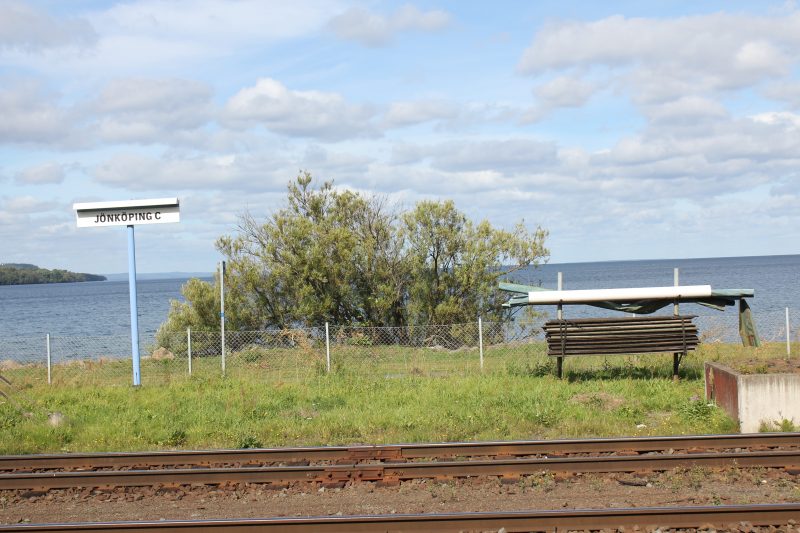

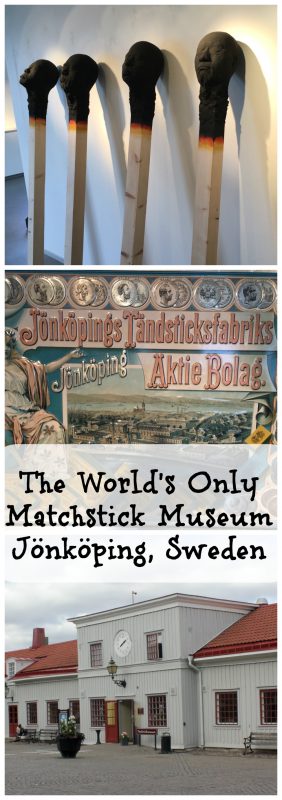



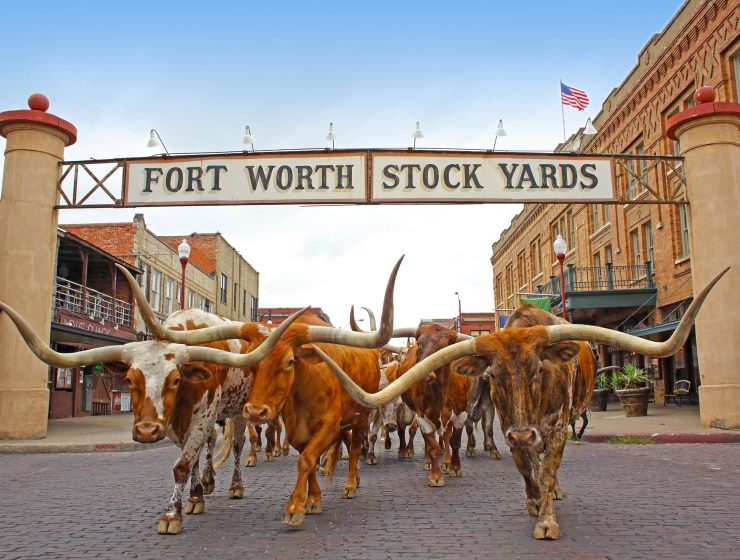



What a quirky find! We’re always on the lookout for odd little places like this and it has become a family joke to name the most bizarre sounding museum. Recently my husband saw a sign for a wallpaper museum on a business trip, sadly in a place I doubt we’ll ever go to! I have written about a seashell museum though which is run by a similar sounding man to your matchstick place, who seemed equally bemused when we visited. #culturedkids
Phoebe | Lou Messugo recently posted…All About France #29
A wallpaper museum – wow! Hehe must check out your seashell museum post. The man’s surprise that we wanted to look around made me giggle.
Amazing! The Junior CW’s are off to southern Sweden with the Scouts this summer maybe they can take time out from hiking to visit #CulturedKids
Catherine’s Cultural Wednesdays recently posted…#CULTUREDKIDS JUNE 2017
Oh what a fabulous experience for them. The museum was quite an education. Great for youngsters.
I love this type of small, quirky museum – what a great find! Those retro matchboxes are truly gorgeous.
Thanks Jenny, it was a very random place but certainly an education.
opps – visiting from #culturedkids
Jenny (The Little Adventurer) recently posted…prague on fire: an exhibition with a difference
strange museum:) but looks fun!
Tanja (the Red phone box travels) recently posted…Home (June #Travellinkup)
It was.
This is amazing! You’re right, those baby heads on top of matchsticks are pretty freaky, but I love the fact that you can get stuck in and try your hand at making matchsticks. Thanks for linking up with #CulturedKids!
Nell (Pigeon Pair and Me) recently posted…#CulturedKids June 2017
It was good fun to make the boxes and we certainly got a lot more out of the museum than any of us thought we would!
Eek! That freaky baby head again! But seriously, this is such a cool post about a quirky place. Reading posts like this make blogging worthwhile! #citytripping
Nell (Pigeon Pair and Me) recently posted…A photo tour of Pont-Aven, in Finistère, Brittany, France
Awww thank you Nell, that’s awesome to hear!
Not a museum I would have naturally gone to but looks like you had a good day! Strangest museum I’ve been to – Sheikh Faisal museum in Doha. It is the oddest collection I have ever seen but great to visit! #citytripping
Wandermust Mummy recently posted…Fearless family travel #5
It’s often the odder places that are the most fascinating.
What a quirky little museum, love places like this and learning more about the region I’m visiting. The artwork is pretty darn creepy though, I have to say! :s #citytripping
Keri | Ladies What Travel recently posted…The Ladies What Travel Guide to Budapest
It’s it! I hurried my daughter past them as they were a bit freaky!
How wonderful! I think museums are at their best when they elevate even the most ordinary items into something really intriguing. I particularly love the early matchbox designs (vintage packaging is a love of mine!), but gaining an appreciation of the social history behind match production is so interesting too. #citytripping
Lorna ✶ The Painted Globe recently posted…How to visit the spectacular Waitomo Glowworm Caves
Definitely! An important history lesson in there and we made a match box too! I’m quite a fan of vintage packaging too. Find it fascinating!
That is a strange museum. Although that explains why cowboys in old movies would light matches on walls or their shoes. I had no idea that children died and were disfigured by the process of making matches previous to the safety match. #CityTripping
Kat recently posted…Ice Cream Museum : sugary fun for adults and kids
It was a tough life back then. Children and adults were affected by the phosphorus. We’re so lucky to live in this time!
I just love these kinds of weird and wonderful museums that actually end up surprising you!
For sure!
Fascinating stuff! And goodness, what a gorgeous spot it’s in. I think the lithograph would’ve piqued my interest too. I think the most unique museum I’ve ever been to was the Ben and Jerry’s factory museum in New England – not necessarily as strange as yours but very different. #citytripping
alex recently posted…What To Do With Boys In Nottingham
Oooh that does sound interesting. My daughter would love that too!
I love a strange museum. I am having trouble thinking of the strangest museum I have been to though.
Kit Graham recently posted…Where to Party in Belgrade
Perhaps you are yet to visit…
Yes that takes some beating for unusual Museum. I guess it should be twinned with the Lowry with their matchstick men and matchstick cats and dogs! We did go to a cutlery museum in Normandy once for which we forked out €5.
Indeed, it should! Cutlery! That is unusual!
I’ve never heard of this one. Those baby head matches are bizarre!
beatravelling recently posted…Cantina Cortina
Really bizarre!
Ooh very interesting! Who knew that a visit to a matchstick museum would turn out to be educational 🙂 #citytripping
Exactly! I didn’t!
A matchstick museum! Wow! What an unusual place but sounds fascinating! The thought of young children working makes me so sad. We recently visited some local mines here in South Wales where children as young as six would work 12 hour days. It broke my heart thinking about it. #citytripping
Oh my goodness. Child labour was huge in the mines wasn’t it as they could get into the smaller cavities. So sad.
Interesting find! And it sounds as though you all learned quite a lot from the museum. Great that you could also get hands-on too. The matchstick sculptures with heads are pretty creepy though! #CityTripping
Haha very creepy!
Looks like a bizarre but brilliant day out. Nice post
Thank you Samantha!
Actually, how things are made in factories *is* interesting. Not surprised your little one was so captivated by the processes. There’s a bit of a thriving tourist thing here of touring factories – admittedly ice cream and chocolate factories, but I could quite happily go and look at all sorts of similar places. Cool!
Sol Solntze recently posted…A night at the Bulgakov Museum Moscow. And the other one too.
It’s fascinating isn’t it!
Well what a different place to visit! Really interesting to learn about the history – we forget that not long ago child labour was common and of course sadly still is in some countries. #citytripping
tracy collins recently posted…A view from the past – 10 cities as you have never seen them before!
Yes, good point. It’s shocking.
Never have I thought so much about matches, or thought it’s to make a matchstick box, but that’s why this museum rocks! I like the sculpted heads too. #citytripping
tots2travel recently posted…A Weekend in Aberdeen Staying at the Aberdeen Altens Hotel
I know, same. Love places that make you question normal objects and aspects of life.
Honestly, I love this sort of museum. No crowds, no expectations, and you almost always learn something new. And our quirkiest museum ever? Something similar, actually – a stick man museum (a collection of stick man sculptures made by one dedicated (obsessive?) frenchman in the latter parts of the 20th Century). It was brilliant too! 😀 Actually, I’ll be linking that one up to the next #CulturedKids, so maybe you’ll read about it 😉 . Greetings from Luxembourg.
That sounds amazing Jonny and how very apt. Will definitely check it out. You’re so right, no expectations but learning something different to the norm.
So interesting and so random I might just have to put it on my bucketlist! <3
Very random, but a great region to visit!